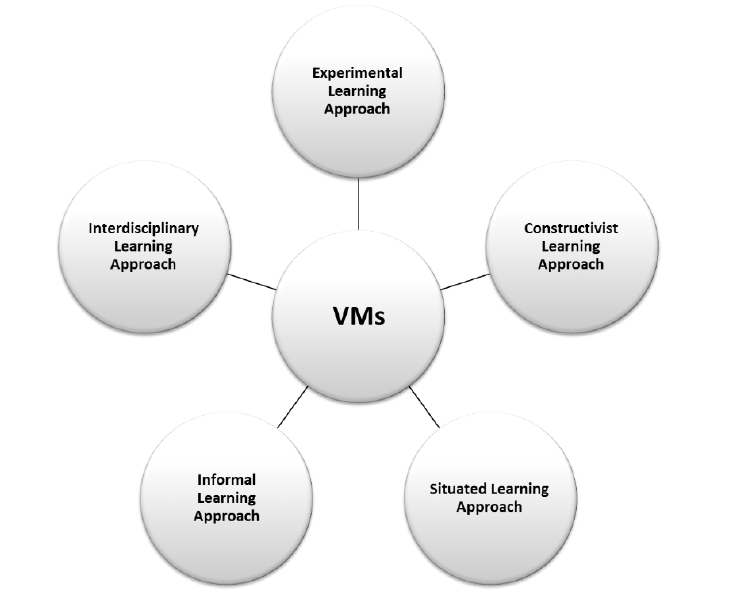VM-Based Learning and Students' Views
- Yi Qian

- Oct 15, 2017
- 2 min read
The week 4 material says that Web 2.0 increases the interactivity between the web and the users. It makes users more easily control where, how and what they learn. Virtual museums are obvious outcomes of the emergence of Web 2.0. Nowadays, many schools and educational institutions around the world use virtual museums as an educational method. VMs are able to create interactions and learning experience due to the networking technology which can't be found in traditional educational environments.
VMs can be placed among several learning environments which you can tell from the figure below. For instance, the constructivist learning approach wants students to learn based on their prior experience. "The VM learning experiences provided under a constructivist framework would encourage learners to use their hands and their minds to experiment with the world and reach their own conclusions, through choosing what they want to attend to." The informal learning approach means that learning can happen outside a formal educational learning environment which now also refers to the different types of learning activities. We can tell from the popularity of VMs that students are engaged in digital technology-based activities since they are born in this digital era.

Considering VMs' educational role and social contribution, Many studies have done some research on students' views of VMs. For example, a research in the third grade of junior High school in Ialyssos, Rhodes, investigated 100 students who have participated in a project about the construction of an educational virtual museum.
Their survey contained questions like "do you think that a virtual educational museum can help you meet local folk art?" or "would you like to contribute to the dissemination of local folk art through the contribution of virtual educational museum?". Before the teaching intervention, around 80% of the students said "Yes". Nearly 97% of the students said "yes" after the teaching intervention.
Students appear to be positive towards VMs. Whatever the new method in teaching practice is used, their curiosity and capability of experiencing latest technology will make the learning process enriched. VMs can help students learn more about culture, art, science, etc. As a result, students will also realize the value of these heritage and apply more technology to the protection of them.
References:
Maria Kampouropoulou, Persa Fokiali, Ioanna Efstathiou, Efstathios Stefos, Review of European Studies; Vol. 5, No. 4; 2013, "The Virtual Museum in Educational Practice"
Dina Ahmed Ismaeel, Ahlam Mohammed Al-Abdullatif, "The Impact of an Interactive Virtual Museum on Students’ Attitudes Toward Cultural Heritage Education in the Region of Al Hassa, Saudi Arabia"


Comments